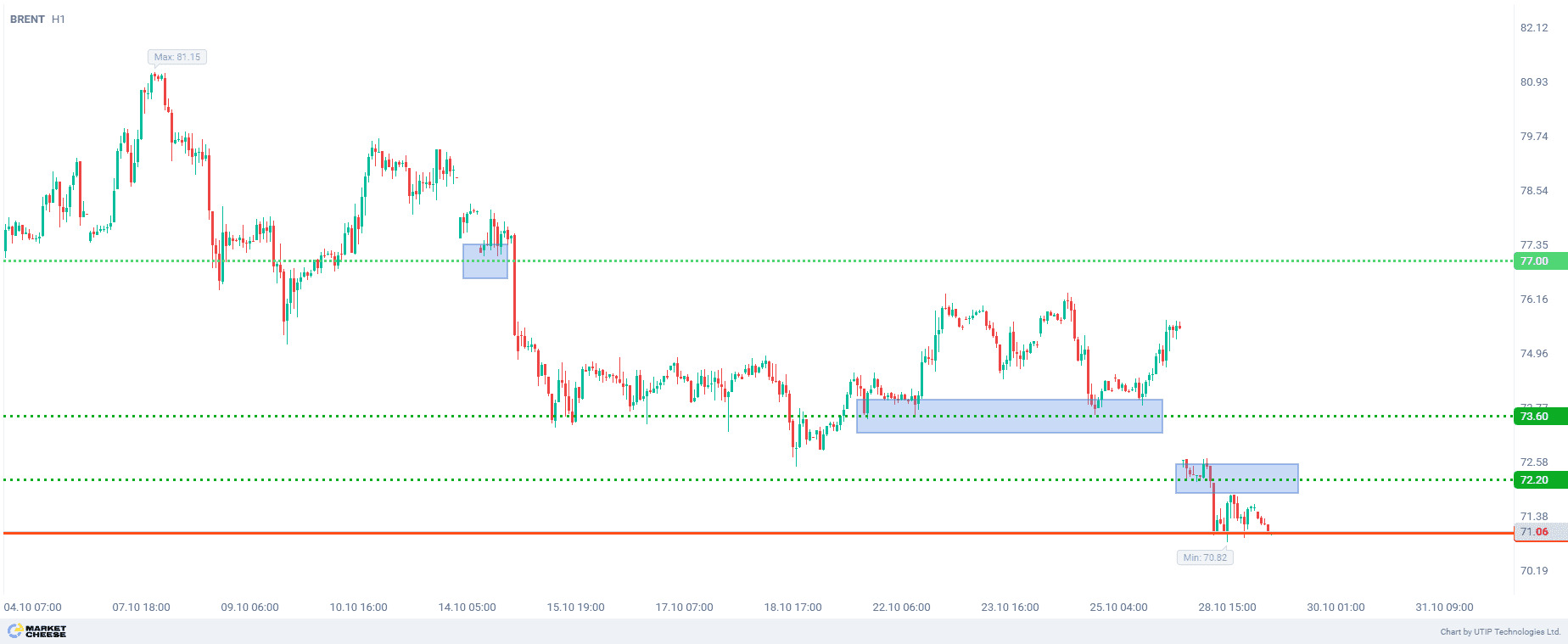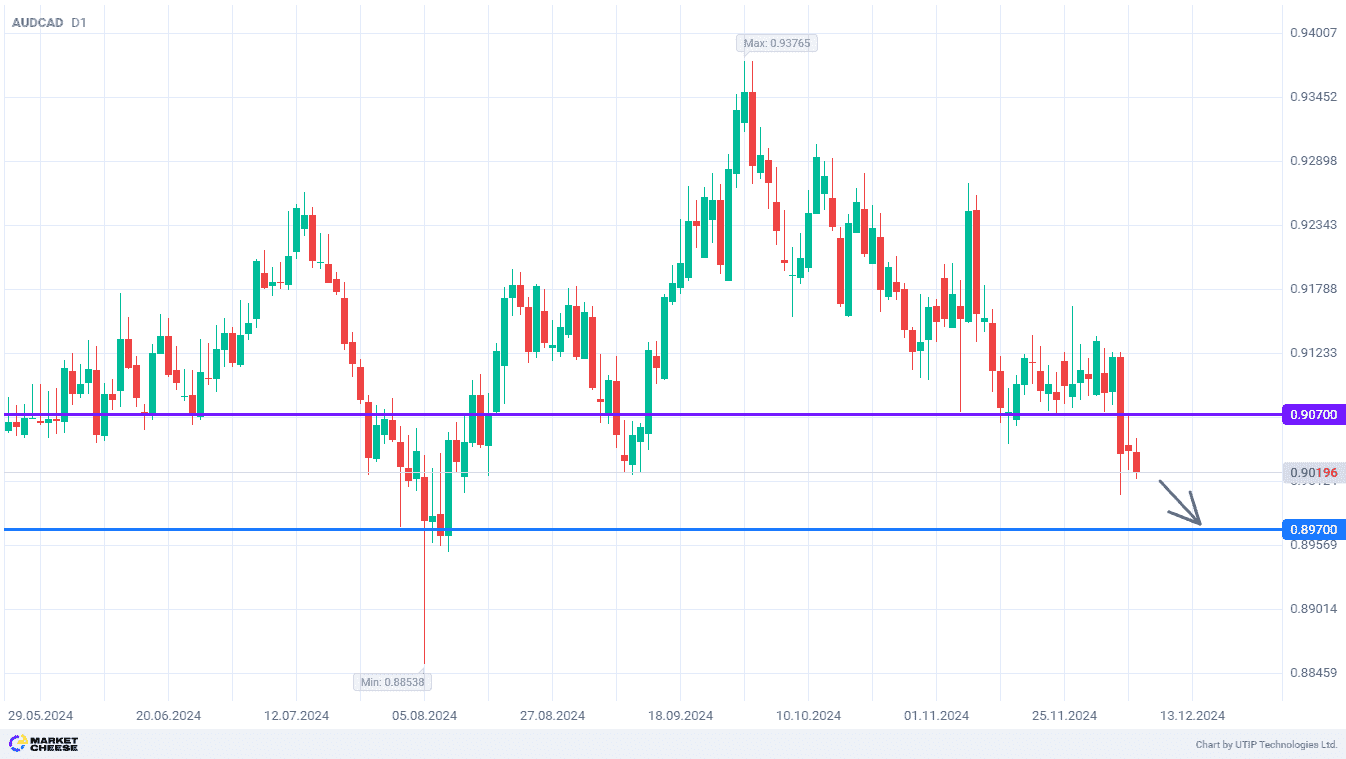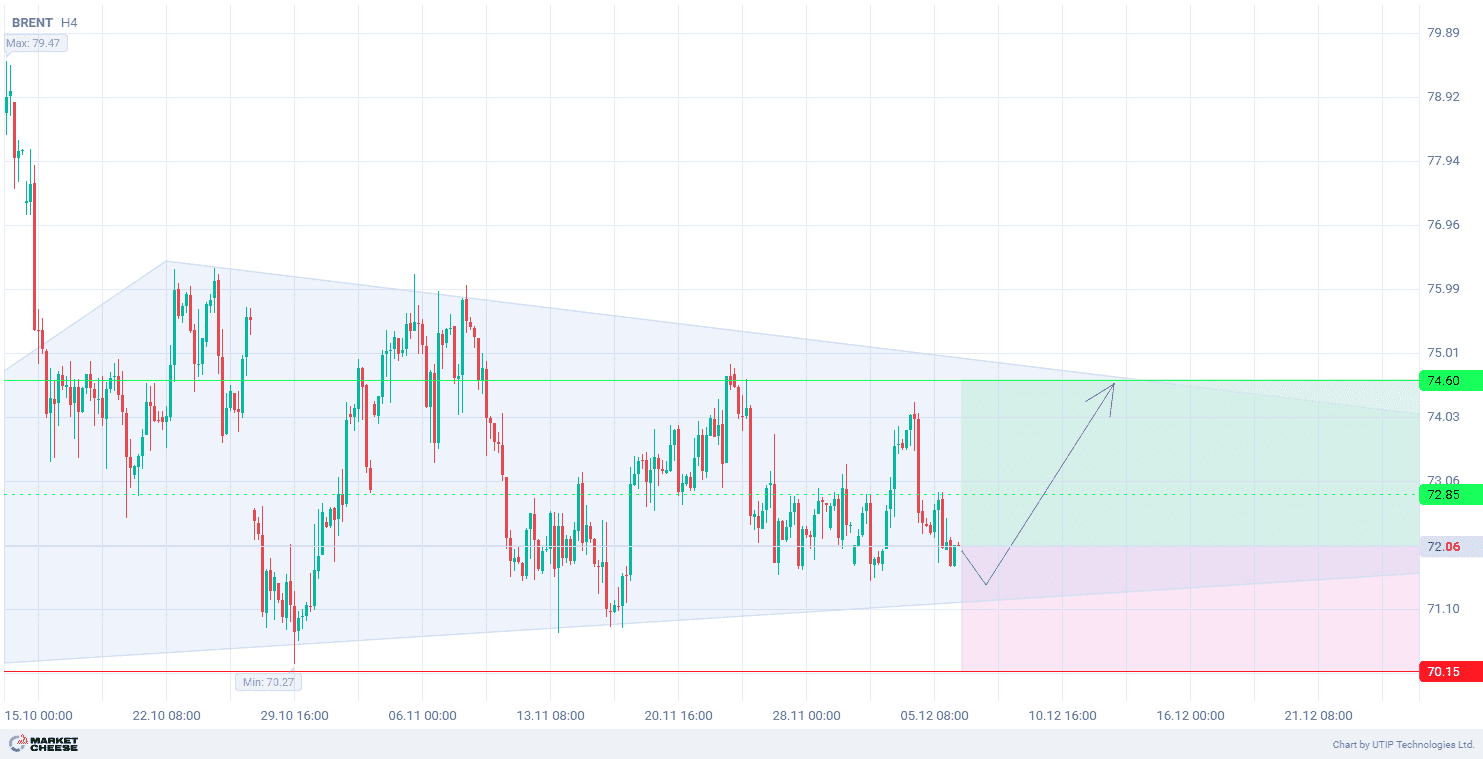If you look at Brent crude chart, you’ll see that over the past two weeks there were at least three local lows that have not been retested by the price. The first one was formed on October 14 and lies at the level of $77 per barrel, the second minimum is highlighted by three pin bars at the level of $73.6. And the last one, formed yesterday at the market opening, is the level of $72.2.
From a technical point of view, the probability of a retracement test of these levels increases with each case when such a test isn’t performed by the market. That is, now we have a very high chance of Brent price movement to the level of $72.2 per barrel.
At the same time, in general, it should be understood that the presence of a series of such uncorrected downward breakouts indicates a strong bear market.
Most of the fundamentals indicate further downward movement. These include falling demand from China, low manufacturing activity in the US, and calls for de-escalation in the Middle East.
Such unanimity, as a rule, quickly negates any unidirectional movement, as a strong imbalance between sellers and buyers is formed. If the majority of market participants are on the selling side, there are few players on the buying side, and there is no one to sell, the development of the downward price movement stops, and then a corrective reversal follows, caused by closing the positions of sellers, who were the first to notice the exhaustion of the selling potential.
The final recommendation is to buy Brent.
The profit could be fixed at the level of 72.20. The Stop loss could be placed at 69.80.
Such a deal is countertrend and carries high risks.
The volume of the opened position should be set so that the value of a possible loss, defined with a protective stop order, doesn’t exceed 2% of your deposit.










